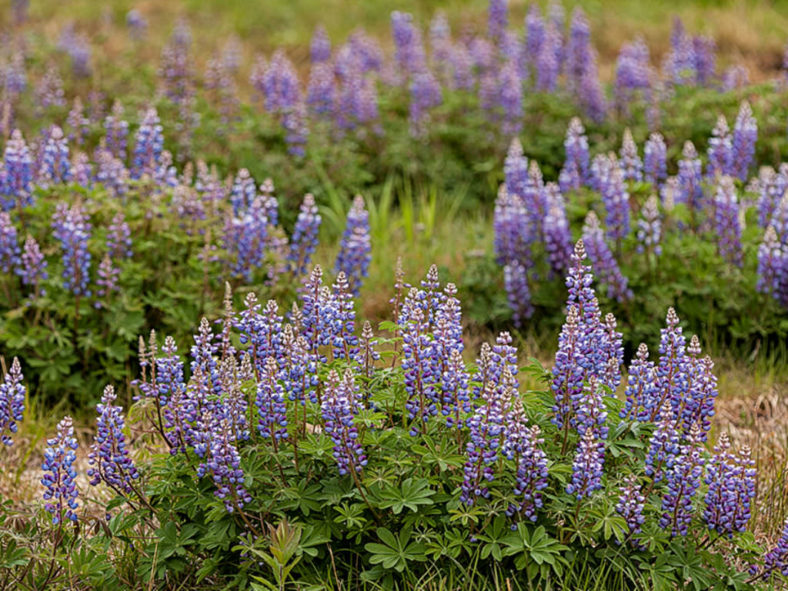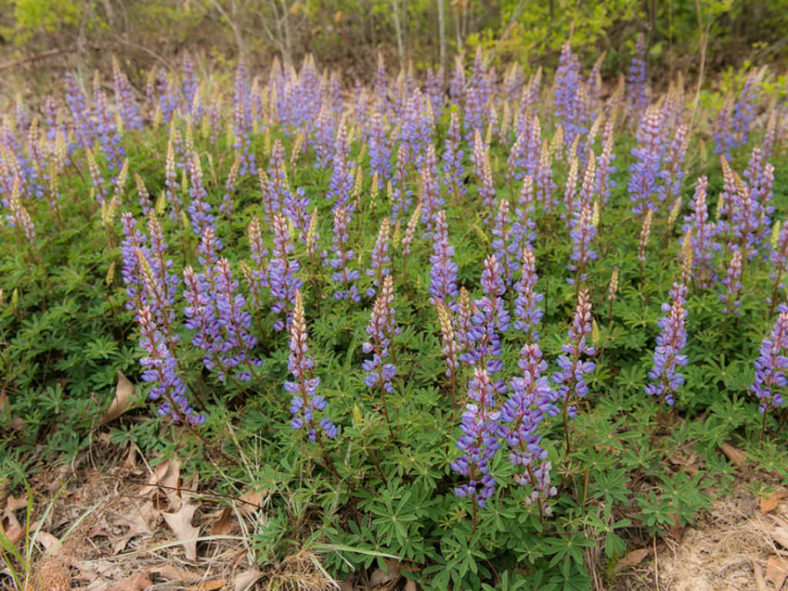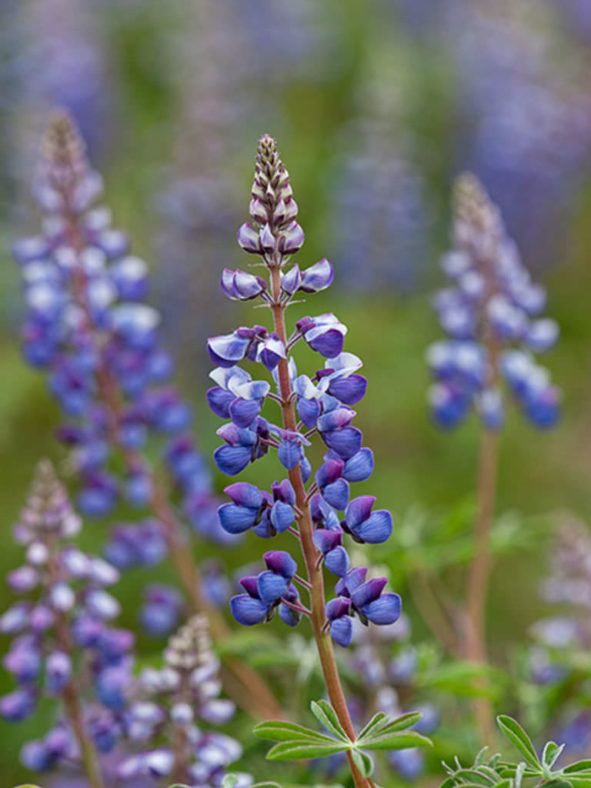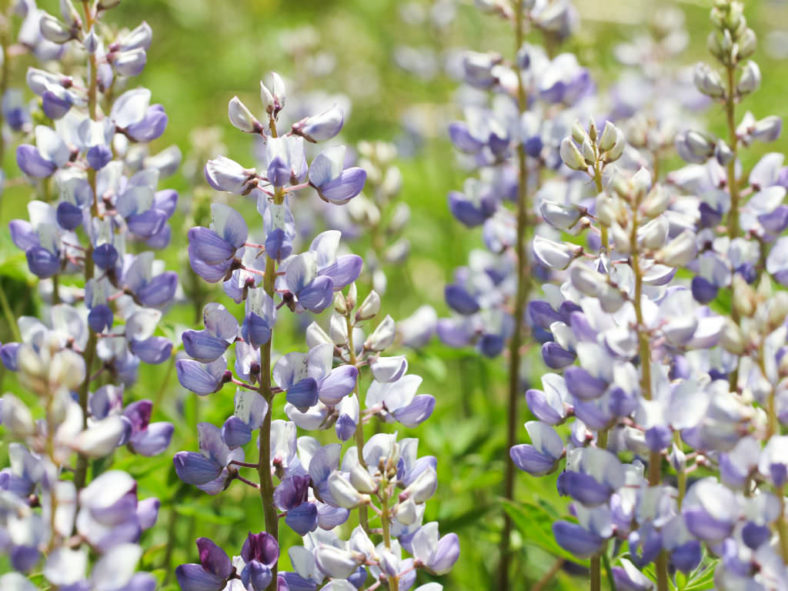Scientific Name
Lupinus perennis L.
Common Name(s)
Wild Lupine, Wild Perennial Lupine, Sundial Lupine, Blue Lupine, Indian Beet, Old Maid's Bonnets
Synonym(s)
Lupinus perennis subsp. perennis, Lupinus perennis var. perennis, Lupinus perennis f. perennis, Lupinus nuttallii
Scientific Classification
Family: Fabaceae
Subfamily: Faboideae
Tribe: Genisteae
Subtribe: Lupininae
Genus: Lupinus
Origin
Lupinus perennis is widespread in the eastern part of the United States (from Texas and Florida to Maine) and Minnesota, Canada, and on the coasts of the Arctic Ocean, where it grows in sandy areas such as dunes and savannas.
Flower
Color: Blue
Bloom Time: Late spring
Description
Lupinus perennis is an erect perennial with light green to reddish-green stems with thin grayish-white hair. It grows up to 2 feet (60 cm) tall. Leaves are alternate in arrangement, palmately divided into 7 to 11 oblanceolate leaflets, and occur below the inflorescence on long stems. The upper surface is green and smooth, while the lower is paler due to fine grayish-white hair.
The inflorescence is a tall raceme, rising above the leaves and bearing numerous flowers that can vary in color from blue to pinkish to white.

Hardiness
USDA hardiness zone 4a to 8b: from −30 °F (−34.4 °C) to 20 °F (−6.7 °C).
How to Grow and Care
Lupines need neutral to slightly acidic soil, although they can grow in very acidic soil conditions. Lupines don't need rich loam, but it's important to grow the plants in well-draining soil to avoid root rot. Sandy soil conditions and poor, rocky soil promote the growth of the Lupine's deep taproot.
Starting Lupines from seed is an economical way to get a showy flower garden the following season.
The seed coat is tough, and seeds have a better germination rate if you nick the seed coat or soak them in water overnight. Plant them about 0.25 inches (6.5 mm) deep outdoors in a permanent area that receives full sun, as they do not transplant well due to their long taproot. Expect germination in 14 to 30 days.
Although Lupines demand good drainage, they also like regular irrigation, so they provide the equivalent of 1 inch (2.5 cm) of rain each week if conditions are dry.
Lupines don't require fertilization, and in fact, too much fertilizer can encourage excess foliage growth at the expense of blooms.
See more at How to Grow and Care for Lupines.
Links
- Back to genus Lupinus
- Plantpedia: Browse flowering plants by Scientific Name, Common Name, Genus, Family, USDA Hardiness Zone, or Origin
Photo Gallery
Click on a photo to see a larger version.




